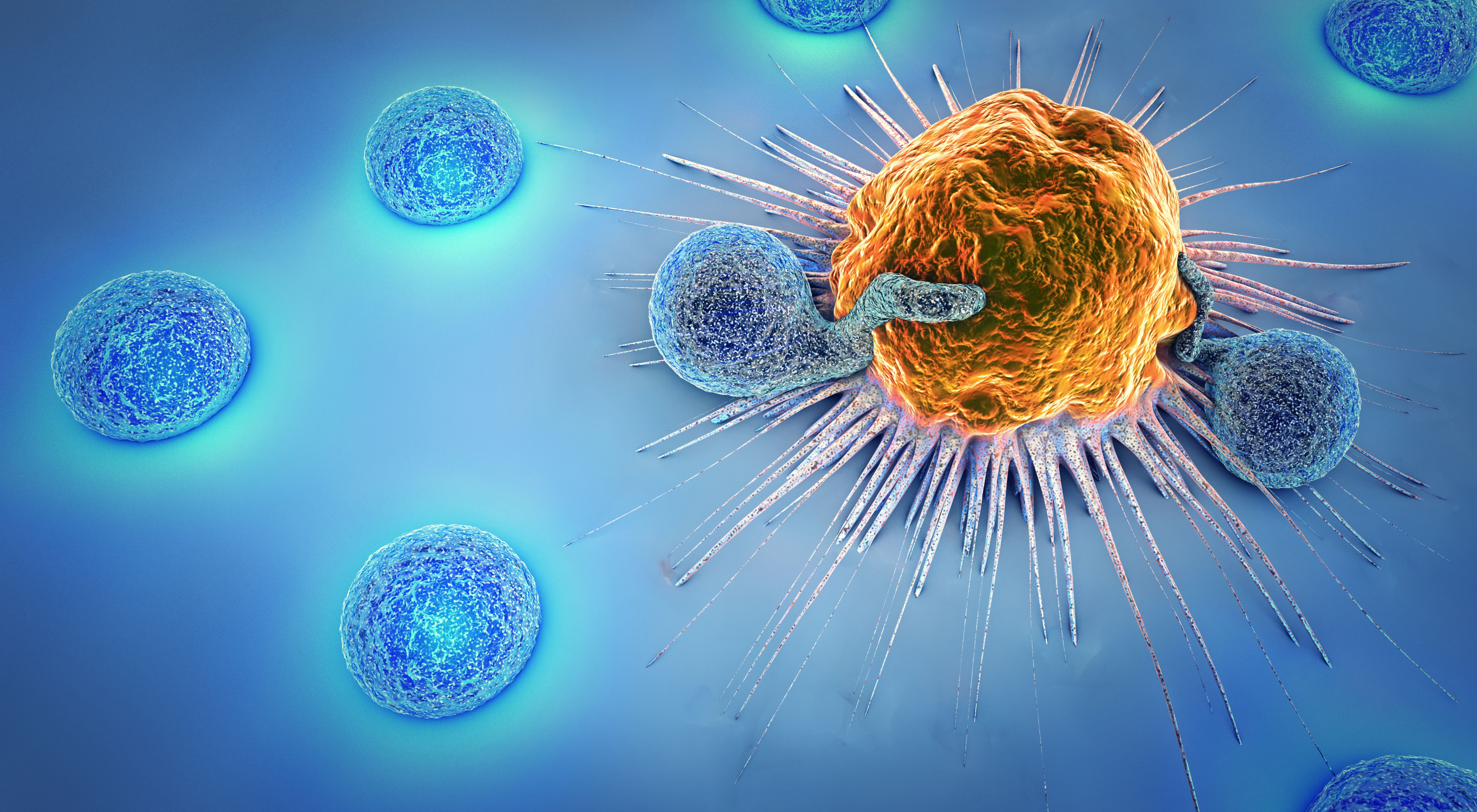Video
Vince's Story: A Diagnosis of Hairy Cell Leukemia
Transcript:
Robert J. Kreitman, M.D.: Hello, and welcome to CURE Expert Connections®. I’m Dr. Robert Kreitman. I’m here with Vince Fazio, and he’s going to share with us his journey through several decades with hairy cell leukemia. So Vince, why don’t you tell us a little bit about your early experience with hairy cell?
Vince Fazio: I was playing with the kids one evening, and I was on the floor with them playing. I rolled over on to my stomach, and I felt this lump underneath my stomach ribcage area. And I said, “Whoa,” to myself, “Hey, I must have eaten too much for dinner.” So I didn’t think anything of it and I watched it for the next few days. It didn’t go away so I made an appointment with my primary care physician. I pointed it out to him, and he checked it out and said, “Oh, it’s probably nothing.” And then later that day after that appointment, I got a call from his office saying that, “You need to go see a hematologist or an oncologist.”
Now at that time I didn’t exactly know what a hematologist was, but I did know what an oncologist was. And that started the most nerve-wracking two-week period of my life, not knowing what was wrong with me, not knowing whether there was a treatment. I was on pins and needles through that period, I could not concentrate on anything: work, nothing. All I had on my mind was, “What’s wrong with me and how can I get rid of it?”
Robert J. Kreitman, M.D.: That was in 1998, right?
Vince Fazio: Yes, that was in 1998.
Robert J. Kreitman, M.D.: OK, so it was a little over 20 years ago. You bring up some interesting, classic experiences that people have with hairy cell leukemia when they get diagnosed. This disease was described by Bertha Bouroncle back in 1958. And back then, as well as now, patients present with splenomegaly, a large spleen — the spleen is up here in the left upper quadrant of the abdomen — and also with low blood count. So I imagine that the reason he said you should see a hematologist was that he had a blood count done, and the normal blood counts were low. And so this is a way that patients present. No. 1 low blood counts. No. 2 a large spleen.
Some patients present with bruising or infection. The bruising is from the low platelet count. The infection is due to a low neutrophil count. So this is the classic way that patients present with hairy cell leukemia. It pretty much is similar nowadays as it was back then.
Hairy cell leukemia is called a rare disease. There are about 1,250 new cases per year in the United States. Back when it was first described, there were about 600 new cases per year in the United States, about 2 percent of all leukemias. So that’s quite a few patients. People ask, “How prevalent is it?” We don’t know exactly, but the fact is over the past 30 years or so, since we’ve had good treatments, the purine analog treatments, patients have not been dying of it very much, but they haven’t been cured either. So there’s an accumulation of patients from year-to-year, and a patient typically will get diagnosed between ages of 45 and 55, so they’re pretty young.
Really for the last 30 years, patients have not been dying, they’ve been accumulating. There could be tens of thousands of patients by now with hairy cell leukemia in the United states, and maybe the same number in Europe and many in other places of the world. So it gives you an idea about how common it is. It’s not a common disease. Many people call it a rare disease, but it’s a disease that we see fairly often. I like to think of it as there’s maybe three or four new cases per day in the United States.
So your main symptoms were this abdominal mass. Were you having any fatigue or bruising or anything at the time?
Vince Fazio: None that I noticed. The only thing I noticed was the lump underneath my ribcage on the left side. But I felt normal.
Robert J. Kreitman, M.D.: Then I suppose your doctor or the hematologist that you went to did a bone marrow biopsy?
Vince Fazio: Yes, that was a scary event. I went to my first appointment with my hematologist, and he did a bone marrow biopsy right there in the office. At that time, I didn’t know what a bone marrow biopsy was, and I didn’t know what to expect. But when they put me on the table and rolled me to my stomach and one of his nurses came up to me and said, “Do you want to hold my hand,” I knew I was in trouble. It was a pretty harrowing experience to go through that. The doctor was pushing on my back. I didn’t know what was going on and it was painful, because it was the first time I’d had it done.
Robert J. Kreitman, M.D.: How long did it take for them to figure out what it was, to tell you what it was?
Vince Fazio: It took two weeks. And as I said, that was two weeks of a very nerve-wracking experience waiting for that diagnosis and whether there was a treatment for that diagnosis.
Robert J. Kreitman, M.D.: Right. And you must have had a fear that you were going to be told that you have something that can’t be treated.
Vince Fazio: Oh yes, I did. I did probably one of the worst things you could do, which is to go on the internet and check all kinds of sources, and I was self-diagnosing myself. So I had myself in the grave in three weeks.
Robert J. Kreitman, M.D.: Right. Did they do a spleen or an imaging test, like a CT [computed tomography] scan or an ultrasound?
Vince Fazio: Yes, eventually I did get all those tests done. What I remember is primarily the bone marrow biopsy, which was the first thing that I could remember going back that far.
Robert J. Kreitman, M.D.: Right, that’s a pretty memorable test.
Transcript Edited for Clarity




